
2008
from
Mendhak Website
recovered through
WayBackMachine Website
In 1994, Italian journalist
Enza Massa was at the Italian National
Library in Rome when she stumbled upon an unusual find. It was a
manuscript dating to 1629, titled: Nostradamus Vatinicia Code.
Michel de Notredame, the author's name, was on the inside in
indelible ink. This manuscript, never published by Nostradamus, was
handed down to the prophet's son and later donated by him to Pope
Urban VIII. It did not surface again until now, almost four hundred
years later.
The cryptic paintings vary from the strange to the bizarre, with images of popes, decapitations and strange creatures. Known as the "Vaticinia Nostradami", this book has often been considered to be Nostradamus' final prophecies regarding the end of the world as we know it. It was said that Nostradamus had handed the book over to his son who in turn was to donate it to a cardinal at the time who later went on to become Pope Urban VIII; the book eventually ended up in the library.
The cryptic paintings vary from the strange to the bizarre, with images of popes, decapitations and strange creatures. Known as the "Vaticinia Nostradami", this book has often been considered to be Nostradamus' final prophecies regarding the end of the world as we know it. It was said that Nostradamus had handed the book over to his son who in turn was to donate it to a cardinal at the time who later went on to become Pope Urban VIII; the book eventually ended up in the library.
In both the paintings and the accompanying quatrains within,
Nostradamus is said to have predicted the Nazi Blitzkrieg, the
assassination attempt on Pope JohnPaul II, the burning of the oil
wells of Kuwait by Iraq, and Boris Yeltsin's rise to power.
Some of the paintings reveal new prophecies, while others are either generally indecipherable or linked to earlier quatrains, but not indicated. Among the paintings are a Pope with the body of a dog, female priests, clergymen being attacked and a black-skinned pope.
Some of the paintings reveal new prophecies, while others are either generally indecipherable or linked to earlier quatrains, but not indicated. Among the paintings are a Pope with the body of a dog, female priests, clergymen being attacked and a black-skinned pope.
Following are original images from the Nostradamus Vatinicia.
Giancarlo Rossi, part of the research team given exclusive access to the book, has been actively updating the Vaticinia Nostradami page on Wikipedia (see far below insert) with more information and reproduced versions of the paintings found in the book.
Giancarlo Rossi, part of the research team given exclusive access to the book, has been actively updating the Vaticinia Nostradami page on Wikipedia (see far below insert) with more information and reproduced versions of the paintings found in the book.
Following are some of
the more notable images:
The
History Channel will be presenting a show of the
cumulative research efforts over the years done on the book. The
show is scheduled to air on October 28, 2007 at 9PM PT/ET.
More information on the Lost Book of Nostradamus can be found on Giancarlo's Wikipedia entry (far below insert) or on the Yale University website which contains a full text (Marston MS 225) of the description of the book (immediately below insert):
More information on the Lost Book of Nostradamus can be found on Giancarlo's Wikipedia entry (far below insert) or on the Yale University website which contains a full text (Marston MS 225) of the description of the book (immediately below insert):
|
Nostradamus Book -
Some Images
by
SafeFriction
December 11, 2013
from
YouTube Website
Nostradamus's son, Cesar, may be
the actual author of what is known as the 'lost book' of prophecies
discovered in 1994.
The Vaticinia Michaelis Nostradami de Futuri Christi Vicarii ad Cesarem Filium D. I. A. Interprete (The Prophecies of Michel Nostradamus on The Future Vicars of Christ to Cesar His Son, As Expounded by Lord Abbot Joachim), or Vaticinia Nostradami (The Prophecies of Nostradamus) for short, is a collection of eighty watercolor images compiled as an illustrated codex.
The Vaticinia Michaelis Nostradami de Futuri Christi Vicarii ad Cesarem Filium D. I. A. Interprete (The Prophecies of Michel Nostradamus on The Future Vicars of Christ to Cesar His Son, As Expounded by Lord Abbot Joachim), or Vaticinia Nostradami (The Prophecies of Nostradamus) for short, is a collection of eighty watercolor images compiled as an illustrated codex.
A version of the well-known Vaticinia de Summis Pontificibus of the
13th-14th century, it was discovered in 1994 by the Italian journalists
Enza
Massa and Roberto Pinotti in the Biblioteca Nazionale Centrale di Roma
(Central National Library) in Rome, Italy.
The document can be found in the
library under the title
Fondo Vittorio Emanuele 307.
Alleged Nostradamian connections
A postscript by Carthusian librarians states that the book had been presented by one Brother Beroaldus to cardinal Maffeo Barberini, who would later become Pope Urban VIII (1623--1644).
A further covering note suggests
that the images were by the French seer Nostradamus (1503-1566), and had
been sent to Rome by his son César de Nostredame as a gift.
There is,
however, absolutely no contemporary evidence that Nostradamus himself was
either a painter or the author of the work, whose contents in fact date from
several centuries before his time - nor, indeed, that he had ever heard of it,
given that it did not finally appear in print until after his death.
The postscript is in fact dated
'1629', and the covering note (not in Nostradamus's hand) from which the
Nostradamian title derives cannot, on the basis of its contents, date from
earlier than 1689 - though an internal note does refer to a source dated
1343.
There is a letter by Cèsar de Nostredame (Michel's first son), written to the French scientist Fabri de Peiresc, in which mention is made of several miniatures painted by Cèsar, and of a booklet that was destined as a gift to King Louis XIII in 1629, but there is no evidence whatsoever of any connection between these and the Vaticinia.
The images contain symbolic objects, letters, animals, crossings of banners, bugles, crosses, candles, three writing styles, etc., some of which seem to some to form figures similar to Roman numerals, or veiled references to personal names.
There is a letter by Cèsar de Nostredame (Michel's first son), written to the French scientist Fabri de Peiresc, in which mention is made of several miniatures painted by Cèsar, and of a booklet that was destined as a gift to King Louis XIII in 1629, but there is no evidence whatsoever of any connection between these and the Vaticinia.
The images contain symbolic objects, letters, animals, crossings of banners, bugles, crosses, candles, three writing styles, etc., some of which seem to some to form figures similar to Roman numerals, or veiled references to personal names.
As suggested by the various
added inscriptions, they are supposed to have been inspired by the
celebrated papal prophecies of Abbot Joachim of Fiore, a 12th-century
Cistercian monk from Calabria.
The origin of the work is clearly the fourteenth century Vaticinia de Summis Pontificibus, in which most of the images (including Image 23 opposite) are to be found. By way of example, its Image 12 corresponds to the latter's Image 9, Image 18 to 15, Image 23 to 20, Image 24 to 21 and Image 29 to 26 (note, too, the similarity of sequence).
The origin of the work is clearly the fourteenth century Vaticinia de Summis Pontificibus, in which most of the images (including Image 23 opposite) are to be found. By way of example, its Image 12 corresponds to the latter's Image 9, Image 18 to 15, Image 23 to 20, Image 24 to 21 and Image 29 to 26 (note, too, the similarity of sequence).
A work similar to this is
Marston MS 225, which can be found in the manuscript and rare-book library
of Yale University, in New Haven, Connecticut, USA. This manuscript comes
from the German areas of Bavaria and Bohemia, probably from within the
courts of emperor Frederick III and Maximilian I.
Michel de Nostredame (14 or 21 December 1503 - 2 July 1566), usually Latinized as Nostradamus, was a French apothecary and reputed seer who published collections of prophecies that have since become famous worldwide.
Michel de Nostredame (14 or 21 December 1503 - 2 July 1566), usually Latinized as Nostradamus, was a French apothecary and reputed seer who published collections of prophecies that have since become famous worldwide.
He is best known for his book
Les Propheties, the first edition of which appeared in 1555. Since the
publication of this book, which has rarely been out of print since his
death, Nostradamus has attracted a following that, along with much of the
popular press, credits him with predicting many major world events.
Most academic sources maintain that the associations made between world events and Nostradamus's quatrains are largely the result of misinterpretations or mistranslations (sometimes deliberate) or else are so tenuous as to render them useless as evidence of any genuine predictive power.
Most academic sources maintain that the associations made between world events and Nostradamus's quatrains are largely the result of misinterpretations or mistranslations (sometimes deliberate) or else are so tenuous as to render them useless as evidence of any genuine predictive power.
Nevertheless, occasional
commentators have successfully used a process of free interpretation and
determined 'twisting' of his words to predict an apparently imminent event.
In 1867, three years before it
happened, for example, Le Pelletier did so to anticipate either the triumph
or the defeat of Napoleon III in a war that, in the event, begged to be
identified as the Franco-Prussian war, while admitting that he could not
specify either which or when.
Nostradamus enthusiasts have credited him with predicting numerous events in world history, including,
Nostradamus enthusiasts have credited him with predicting numerous events in world history, including,
Indeed, they regularly make
similar claims regarding each new world crisis as it comes along as there is
a tendency to claim that "Nostradamus predicted whatever has just happened."
|
|
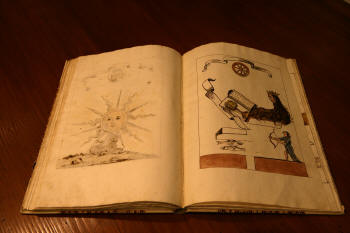

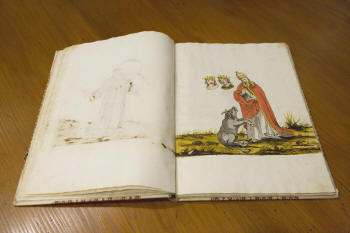

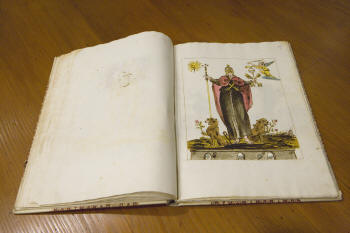
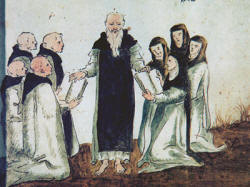




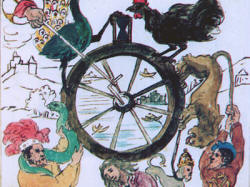

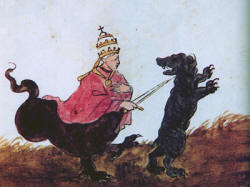
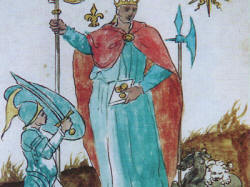


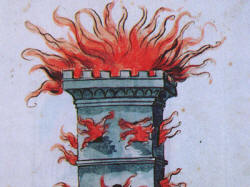



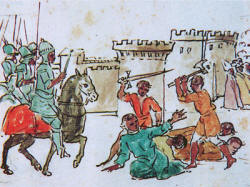




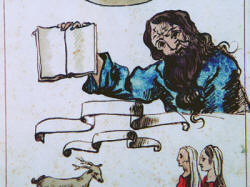
No comments:
Post a Comment